
Senenmut was an 18th Dynasty ancient Egyptian architect and government official. His name translates literally as "mother's brother."

Tomb KV7 was the final resting place of ancient Egyptian Pharaoh Ramesses II of the Nineteenth Dynasty.
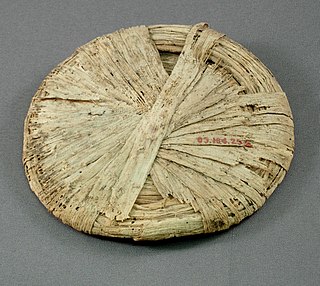
Tomb KV54 is located in the Valley of the Kings, in Egypt. It was originally excavated by Edward R. Ayrton on behalf of the American lawyer Theodore M. Davis, who funded the work.
Herbert Eustis Winlock was an American Egyptologist and archaeologist, employed by the Metropolitan Museum of Art for his entire career. Between 1906 and 1931 he took part in excavations at El-Lisht, Kharga Oasis and around Luxor, before serving as director of the Metropolitan Museum from 1932 to 1939.

Nakht was an ancient Egyptian official who held the position of a scribe and astronomer of Amun, probably during the reign of Thutmose IV of the Eighteenth Dynasty. He was buried in the Theban Necropolis in tomb TT52.
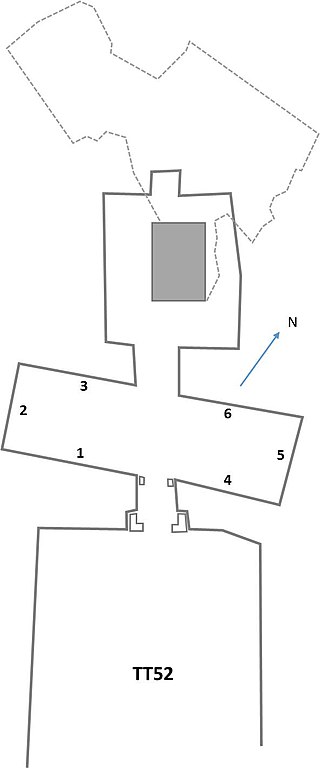
The Theban Tomb TT52 is located in Sheikh Abd el-Qurna, part of the Theban Necropolis, on the west bank of the Nile, opposite to Luxor. It is the burial place of Nakht, an ancient Egyptian official who held the position of a scribe and astronomer of Amun, probably during the reign of Thutmose IV during the Eighteenth Dynasty, the first dynasty of the New Kingdom.
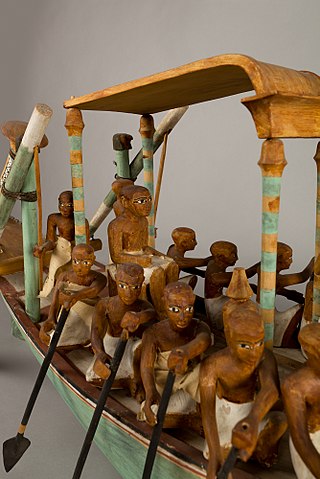
The ancient Egyptian official Meketre was chancellor and high steward during the reign of Mentuhotep II, Mentuhotep III and perhaps Amenemhat I, during the Middle Kingdom.

Tomb TT280, located in Sheikh Abd el-Qurna, part of the Theban Necropolis, is the burial place of the ancient Egyptian noble Meketre who was chancellor and chief steward during the reign of Mentuhotep II and Mentuhotep III, during the Eleventh Dynasty.
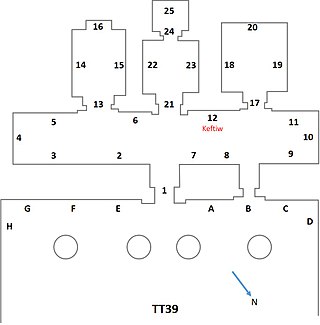
The Theban Tomb TT39 is located in El-Khokha, part of the Theban Necropolis, on the west bank of the Nile, opposite to Luxor. It is the burial place of the ancient Egyptian official, Puimre.
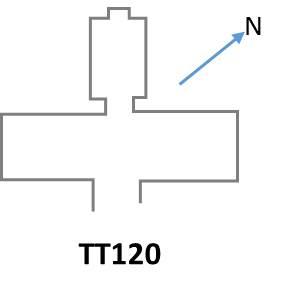
The Theban Tomb TT120 is located in Sheikh Abd el-Qurna. It forms part of the Theban Necropolis, situated on the west bank of the Nile opposite Luxor. The tomb is the burial place of the ancient Egyptian official Anen, who was the brother of Queen Tiye, and became Chancellor of Lower Egypt, Second Prophet of Amun, sem-priest of Heliopolis, and Divine Father under the reign of Amenhotep III.

The Egyptologists Nina M. Davies and Norman de Garis Davies were a married couple of illustrators and copyists who worked in the early and mid-twentieth century drawing and recording paintings in Egypt. Their work was often published together, as N. de Garis Davies, and so it is usually difficult to determine who drew which illustration.

Henuttawy or Henettawy, was an ancient Egyptian princess and priestess during the 21st Dynasty.

Caroline Ransom Williams was an Egyptologist and classical archaeologist. She was the first American woman to be professionally trained as an Egyptologist. She worked extensively with the Metropolitan Museum of Art (MMA) in New York and other major institutions with Egyptian collections, and published Studies in ancient furniture (1905), The Tomb of Perneb (1916), and The Decoration of the Tomb of Perneb: The Technique and the Color Conventions (1932), among others. During the Epigraphic Survey of the University of Chicago Oriental Institute's first season in Luxor, she helped to develop the "Chicago House method" for copying ancient Egyptian reliefs.

The Theban Tomb known as MMA 56 is located in Deir el-Bahari. It forms part of the Theban Necropolis, situated on the west bank of the Nile opposite Luxor. The tomb is the burial place of the ancient Egyptian Lady Ankhshepenwepet, also called Neb(et)-imauemhat, who dates to the 25th Dynasty. Ankhshepenwepet was a Singer in the Residence of Amun and an attendant of Shepenwepet I. It was excavated by Herbert E. Winlock on behalf of the Metropolitan Museum of Arts in 1923–24.
The Theban Tomb known as MMA 60 is located in Deir el-Bahari. It forms part of the Theban Necropolis, situated on the west bank of the Nile opposite Luxor. The tomb is the burial place several high ranking individuals dating to the 21st Dynasty.

The Theban Tomb known as MMA 507 is located in Deir el-Bahari. It forms part of the Theban Necropolis, situated on the west bank of the Nile opposite Luxor. The tomb is the burial place of approximately 60 slain soldiers dating to the 12th Dynasty.

The Theban Tomb known as MMA 59 is located in Deir el-Bahari. It forms part of the Theban Necropolis, situated on the west bank of the Nile opposite Luxor. The tomb is the burial place of the Ancient Egyptian Henuttawy, who dates to the 21st Dynasty and was a Singer of Amun.

The Theban Tomb of Neferkhawet MMA729 is located in El-Assasif, Theban Necropolis. The tomb contained the burials of Neferkhawet, his wife Rennefer, his son Amunemhet, his daughter Ruiu, and his son or son-in-law Bakamun called Baki. Neferkhawet was a scribe and keeper of the documents during the Thutmosid period.
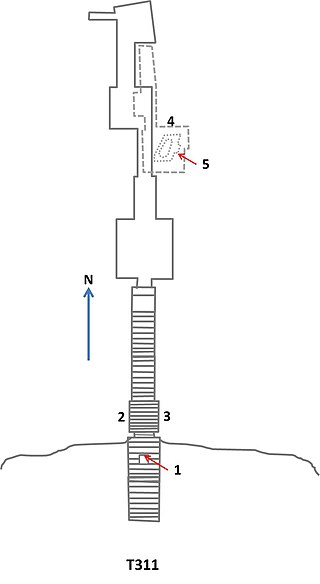
The Theban Tomb TT311 is located in Deir el-Bahari, part of the Theban Necropolis, on the west bank of the Nile, opposite to Luxor. The tomb belongs to the Seal-bearer of the King of Lower Egypt named Kheti. The tomb was excavated by Winlock during the 1923 excavations on behalf of the Metropolitan Museum of Art. Kheti had a tomb near the funerary temple of king Mentuhotep II. The tomb was found heavily destroyed but there are still many remains of reliefs showing that it was once decorated. The burial chamber was better preserved and was also decorated.

















